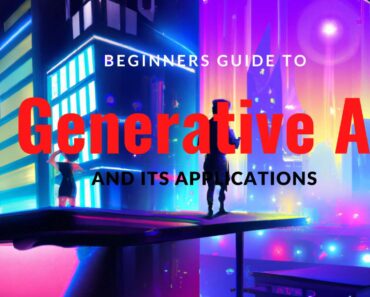Generative AI is a type of artificial intelligence that involves the generation of new data or content based on a set of inputs. This can include creating new images, videos, text, or other forms of data. Generative AI uses machine learning algorithms, such as deep learning, to analyze and learn from existing data in order to generate new, previously unseen content.
Generative AI is a rapidly developing field that has the potential to revolutionize many industries and applications. It has the ability to generate new and creative content, as well as to automate tedious and repetitive tasks. This has many potential benefits, including increased efficiency, productivity, and creativity.
Table of Contents
Examples of generative AI
One of the most exciting applications of generative AI is in the field of art and music. AI algorithms, such as DALL-E, have been used to generate new images and paintings that are inspired by existing artworks. This has the potential to create entirely new forms of art, as well as to assist artists in their own creative processes.
In the music industry, generative AI has been used to create original compositions and even entire songs. For example, the music group Tessa Violet recently used the OpenAI music generation model Jukebox to create an entire album of original songs. This has the potential to expand the boundaries of music and to enable the creation of new styles and genres.
Another potential use for generative AI is in language generation, where AI algorithms, such as GPT-3, can be trained to produce natural-sounding text in a variety of styles and formats. This has potential applications in fields such as journalism, where AI could be used to automate the production of articles and reports. It could also be used to assist with tasks such as customer service and technical support, where it could generate responses to common inquiries.
Benefits of generative AI
In addition to its creative applications, generative AI has the potential to provide significant benefits in various fields. For example, it could be used to generate large amounts of data for use in machine learning algorithms, which could improve the accuracy and effectiveness of AI systems. It could also be used to assist with tasks such as product design and engineering, where it could generate new ideas and prototypes for testing and evaluation.
The use of generative AI also has the potential to increase efficiency and productivity in many industries. By automating tedious and repetitive tasks, it could free up human workers to focus on more complex and creative tasks. This could lead to increased innovation and competitiveness in various fields.
The technology behind generative AI
The technology behind generative AI involves the use of machine learning algorithms, such as deep learning, to analyze and learn from existing data. These algorithms are trained on large amounts of data and use a combination of supervised and unsupervised learning techniques to generate new, previously unseen content.
Deep learning algorithms, in particular, have proven to be very effective at generating high-quality content that is difficult for humans to distinguish from real data. For example, the transformer architecture, which is used in many generative AI models, has achieved impressive results in tasks such as language translation and image generation.
Other approaches, such as diffusion models, have also been developed for generating high-quality content. These models use a different type of machine learning algorithm that is able to capture long-range dependencies in data, which allows for the generation of more coherent and consistent content.
Ethical considerations and challenges
However, there are also some ethical considerations and challenges associated with the use of generative AI. For example, there are concerns about the potential for AI algorithms to create content that is biased or discriminatory, or that could be used for nefarious purposes. There are also technical challenges, such as the need to ensure that AI systems are able to generate high-quality content that is coherent and consistent.
Another challenge with generative AI is the potential for it to replace human workers in certain industries. While this could lead to increased efficiency and productivity, it could also result in job losses and social disruption. This is an important issue that will need to be addressed as generative AI technology continues to advance.
Conclusion
In conclusion, generative AI is a rapidly developing field with many potential applications and benefits. While there are some challenges and ethical considerations to be addressed, the future prospects for generative AI are promising, and it is likely to play a significant role in fields such as art, music, and language generation in the coming years. The development of advanced machine learning algorithms, such as transformers and diffusion models, has enabled the creation of highly sophisticated generative AI systems that are able to produce high-quality content. As this technology continues to evolve, we can expect to see even more impressive and creative applications of generative AI in the future.



